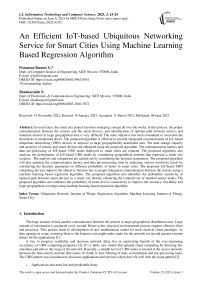An Efficient IoT-based Ubiquitous Networking Service for Smart Cities Using Machine Learning Based Regression Algorithm
Автор: Prasanna Kumar G., Shankaraiah N.
Журнал: International Journal of Information Technology and Computer Science @ijitcs
Статья в выпуске: 3 Vol. 15, 2023 года.
Бесплатный доступ
In recent days, the smart city project has been emerging concept all over the world. In this process, the proper communication between the sensors and the smart devices, and identification of optimal path between sensors and mutation sensors in large geographical area is very difficult. The main objective has been considered to overcome the drawbacks as mentioned above. The proposed algorithm is efficient to provide integrated communication of IoT-based ubiquitous networking (UBN) devices to improve in large geographically distributed area. The data storage capacity and accuracy of sensors and smart devices are enhanced using the proposed algorithm. The communication latency and data pre-processing of IoT-based UBN nodes deployed in smart cities are reduced. The proposed algorithm also analyses the performance of IoT-based UBN nodes by considering geographical testbeds that represent a smart city scenario. The analysis and comparison are carried out by considering the heuristic parameters. The proposed algorithm will also optimize the communication latency and data pre-processing time by analyzing various sensitivity levels by considering the heuristic parameters in different probability of nodes in smart cities. The proposed IoT-based UBN computing devices improve the objective function due to proper integrated communication between the sensors using a machine learning based regression algorithm. The proposed algorithm also identifies the probability sensitivity of optimal path between smart devices in a smart city thereby enhancing the connectivity of mutated sensor nodes. The proposed algorithm also enhances the probability of smart device connectivity to improve the accuracy, flexibility and large geographical coverage using machine learning based regression algorithm.
Ubiquitous Network, Internet of Things, Regression Algorithm, Machine Learning, Smart City
Короткий адрес: https://sciup.org/15018933
IDR: 15018933 | DOI: 10.5815/ijitcs.2023.03.02
Текст научной статьи An Efficient IoT-based Ubiquitous Networking Service for Smart Cities Using Machine Learning Based Regression Algorithm
The huge amount of data packets communicates between the sensors in large geographical distribution area. Large amount of information is produced every second. Hence cyber- physical environmental process requires effective filter and processor. This process leads to development of new mathematical model for each classical cloud paradigm. As data upsurge in scope, asserting them to the Internet core might make strain for the network set-up and present extreme delays for the applications [1].
A key to progress scalability and decrease network delay lies in captivating benefit of the ever-increasing occurrence of UBN computing properties [2]. It’s a fairly new model that spreads cloud computing by directing few amenities and jobs to the verge of the network. Basically, a middle level of UBN nodes is located at the access network, between the data sources and the data center of cloud, to host filtering of data, accumulation and pre-processing tasks. The UBN pattern was considered to discourse applications and services which don’t fit well with the cloud pattern [3].
-
• Applications that need low and predictable delay.
-
• Geo disseminated applications (pipeline monitoring, sensor networks to monitor the situation)
-
• Quick mobile applications.
For instance, in this work, we emphasize on a situation where the UBN infrastructure is implemented to reduce latency and delays got by an air pollution monitoring application in a smart city instance. Fig .1. shows the Ubiquitous Networking and its supported fields [4,5]. IoT based real time health monitoring system can be used both online and offline to measure, monitor and report people’s health conditions. This type of systems requires a ubiquitous network to support such that the connectivity should be available always. Presently, the delay between the sensor nodes and UBN nodes is one of the problems need to be addressed to improve the network speed. There are so many things or objects involved in the real-world network. Usually, the sensor network involves only the sensors and connecting devices and they will be communicating among themselves and working. Then comes the Internet of things(IoT) where the things are communicating with people. IoT involves both humans involved and also the things will be communicating. People side involves PC, PDA, TV, wearable devices, mobile phones etc. and in the things side it involves different data collecting objects like sensors, Vehicles in VANETs, RFID tags, Camera and home appliances.
The proposed work will improve the communication between the sensor nodes and the UBN nodes by reducing the network dependent delay. A pertinent issue that garnered fewer scope in literature reputes the concern of finding, inside a group of accessible nodes of UBN, which nodes would receive and intricate the amount of work initiated by the data sources. In the current projected solutions, indeed, a mutual hypothesis is that the nodes of UBN fluctuating to the sensors by means of single-hop wireless connections [6,7].
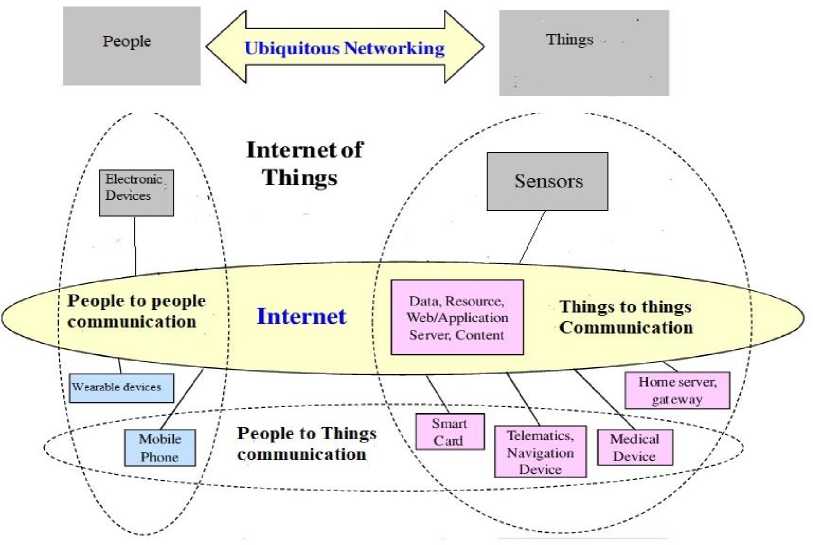
Fig.1. Fundamental IoT Device Communication Process of Ubiquitous Network
There are two key impacts of this research. Initially, we project a proper prototype for the optimization issue of plotting the inward workload on the nodes of UBN: our elucidation considers both the delay in line to the communication delay of the geologically disseminated set-up and the dispensation time on the nodes of UBN because of the local load. Next, we project a heuristic approach to solve the optimization issue in an accessible way. For this goal, we depend on Genetic Algorithms (Gas), which earlier effectively used in the area of cloud computing and Software-as-a-Service (S-A-S) placement. Here we target on a smart city situation that is a characteristic instance of atmosphere where data generated by geologically disseminated sensors might require effectual processing for an extensive variety of probable applications, like traffic monitoring and control, help for self-sufficient driving and ecological sensing [8,9].
As per performance analysis the proposed method on a geographical testing analysis showing the accurate situation of a high technology UBN architecture situated in a minor sized city in Italy’s Emilia Romagna region with approximately 185.000 population. The trials show that the projected MRA demonstrate a feasible heuristic to answer the planning problem in the deliberated situation [10]. Furthermore, we do an analysis of sensitivity on the key experimental factors.
The remaining work is planned as follows. Section 2 shows the literature review on smart cities and section 3 shows the issue properly describes the deliberated optimization prototype, while section 4 shows the heuristic procedures projected for unravelling the issue. Section 5 shows the trial testbed and consequences used to prove the feasibility of our method. Section 6 shows the performance of the proposed algorithm and finally, section 7 concludes the work with few finishing comments and sketches open research issues.
2. Related Works
There are so many smart cities exist around the world. This section contains example of some of the real-world smart city implementations and their advantages and disadvantages. These cities are also act as the motivation for building up other smart cities in underdeveloped countries. The SIP protocol was used for designing the EU funded SyMPHOnY project [11]. This is system to develop a multimodal energy harvesting solution. The data transmission using SIP protocol happens through the specially designed hardware communication device called as the MTCG node. This MTCG node helps for communication in between the SIP server and the sensor devices like temperature sensors, humidity sensors and sometimes home appliances using the M-BUS interface. The MTCG node is the core which is a single package special device that joins all packages together.
Another smart city project is implemented in South Korea known as Eco-U-CITY [12]. This is the first smart city project implemented in South Korea to convert the cities of Dengtan and Hwaseong and it was completed in the year 2008. This is a green technology based project for the safety and comfort of public. Reducing the emission of carbon contents to the atmosphere is the main aim of this project. A specially developed system called “Integrated Service Management Platform(ISMP) is developed for implementing this project. ISMP is a 3 layered model for developing Ubiquitous smart cities presented in [13]. The 3 layers are the infrastructure layer, middle-ware layer and service layer.
New York City Mayor’s office sponsored and launched the Digital City Program under its own supervision. The program’s aim was to provide a single platform combining all city’s general public through the IT driven NYC.GOV portal. This made all citizens to access various applications, functions and services by using their smart phone. Barcelona Smart City Program also uses a three layered model to provide a wide range of technical capabilities as stated in [14]. The first layer constitutes customer interface, second layer is based on a City Operating System (City OS) and the third layer is the sensors. The city has started a series of projects to support the smart city concept and developed physical network using fiber optics to cover a large area of 500km. The city project aim was to integrate Internet and telecommunication together through the twelve identified initiatives.
Padova city in Italy implemented Padova Smart City [15] project as an urban IoT system in association with private and public bodies of the city. The coalition consists of Patavina Technologies, the Department of Information Engineering University of Padova and the municipality of Padova. The University of Padova provided the background to start the project and also give its feasibility report. Patavina Technologies is specialized in the development of creative IoT solutions, provided design and implementations for the IoT nodes and the software required to control the network. And finally, the project is funded by the municipality of Padova.
3. Problem Statement
Major problem is rectification and management of the data flow in the UBN infrastructure as shown in Fig.2. The Fig.2. is representing three layers. The bottom layer is sensor layer that communicates a set of data through wireless mode. Middle layer is UBN layer, which is very much essential for the preliminary data processing of the sensor and top layer is the cloud layer which is used for data gathering, pre-processing and prediction process. [16].
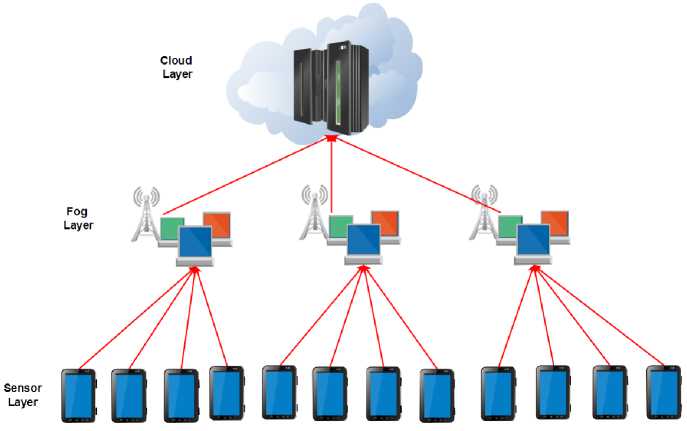
Fig.2. Basic Fundamental Structure of UBN Infrastructure
The basic application logic includes the distinctive amenities of a smart city situation. Sensors gather data on the position of the city, like traffic concentration. Such information would be gathered at the Cloud set-up to give value-added facilities like traffic prediction. The projected layer of UBN intermediates the communication between the sensors and the cloud to give scalability and reliability in the smart functioning of the city [17,18]. In the prototype, we assume a fixed situation where a group of related sensors ‘S n ’ are distributed on a geographical location. Besides, we presume that sensors are generating data at a fixed rate, with a frequency that we show as ai or the generic sensor i. The layer of UBN has a group of nodes F n which get the information from the sensors and does actions on them. Such operations consist of pre-processing the information, like filtering and/or accumulation, or might have some form of analysis to recognize irregularities as soon as conceivable. The distinguished data examples from the UBN nodes are later directed to a cloud where further examination is done and where every data is stored. Such extra investigation jobs are very costly from a calculation perspective [19]. Also, our scheme shows only lone data center of cloud, however it can be modified to spread to a multi-cloud situation.
As the issue related to the supervision of big cloud data Centers is broadly talked in literature, we don’t contemplate the internal particulars of the cloud layer in our issue modeling, like the calculation period at the level of the data center of cloud. In its place, we emphasis our focus to the issue of synchronizing the communication of the features in the sensor layer along with the UBN layer nodes. Precisely, we desire to confirm a tall QoS, in the form of quick answers [20].
To achieve this goal, one should deliberate that the reply time has the subsequent key hand-outs that must be considered:
-
• Network-dependent delay because of the communication among the sensor and the UBN nodes. We show this as γ ij where i is a sensor and j are an UBN node.
-
• Network-dependent delay because of the communication between the UBN node and the data center of cloud. As this is based only on the UBN node because of the lone cloud reflected in the prototype, we just show this measure as γ ij , where j is the UBN node.
3.1. UBN Nodes Data Flow Optimization Model
Calculation time on the UBN node is the time based on the calculation cost of the request and on the data rate for process. We recapitulate the symbols used all through the work as described in Table 1. This paper will address the above mentioned problems in the smart city scenario by using the regression algorithm.
Table 1. Abbreviation of the Proposed Mathematical Model
|
SI. No |
Symbol |
Description |
|
1. |
γ j |
Communication latency between UBN node j with cloud data center |
|
2. |
γ ij |
Communication latency between sensor node i with UBN node j |
|
3. |
a ij |
Data communication between sensor node i to UBN node j |
|
4. |
Sn |
Sensor nodes set |
|
5. |
F n |
UBN nodes set |
|
6. |
α i |
Throughput data packet rate from sensor i |
|
7. |
α j |
Throughput data packet rate from sensor j |
|
8. |
1 τ j |
Processing time at UBN node j |
|
9. |
I |
Sensor node identification index |
|
10. |
J |
UBN node identification index |
The main issue in the deliberated UBN situation is in what way to map on the nodes of UBN the data flows impending through the sensors. To such goal, we describe an optimization issue where we utilize as the key decision factor a matrix of Boolean flags is a i , j [21].
The proposed model shows the result a i , j = 1 when the sensor node i send the data to the UBN node j. Otherwise a i , j = 0 The UBN node pre-processes the incoming data and is filtered as per the task assigned and takes the aggregation. This might be seen in Table 1. for an aggregate of the factors shown in our prototype [22].
The optimization prototype to show the earlier defined issue can be formalized as follows, with a method same as the issue of assigning appeals over a distributed setup, such as VMs on a Cloud. In specific, we present a Boolean decision variables matrix A = a i , j which is utilized to describe the objective function and the restrictions as shown in Equations from 1 to 5.
Subject to:
min obj ( A ) = V i e S V F a i , j .
'I
T: - a
^
+ Yj + Yj
)
“j=V„ S • al.l^^J6 Fn
V f, . -u =1 j Sn(3)
«j ai,j={0,!}, ^je Sn, j e Fn(5) In the issue formalization, the proposed mathematical Equation 1 targets at reducing the total delay and preprocessing time from each sensor to the cloud, along with the operation done at the layer of computing nodes of UBN. Along with the goal function, there is a group of restrictions. Equation 2 shows the inward load aj in each UBN node j. Equation 3 implies that for each sensor i, we send its output to only one UBN node. Equation 4 confirms that, for each UBN node j, we evade a bottleneck scenario, where the inward load aj surpasses the dispensation capability Tj if that node. Finally, Equation 5 describes the Boolean nature of the decision factors aij .
4. Heuristic Procedure The earlier described optimization issue is a general description for mapping sensors on UBN nodes. The authentic answer for this issue could be done by means of commercial solvers, like s CPLEX, previously done in similar problems. We deliberate in this situation to show a solution dependent on the experimental and to relate this method with profitable solvers to authenticate its feasibility. In MRAs we work on an inhabitant of individuals, where every individual shows a likely answer of the issue. The elucidation is pre-set in a chromosome which describes the individual and the chromosome is made by a static number genes that show the lone factors showing a result of the issue [23,24]. A populace of individuals is characteristically adjusted arbitrarily. A fitness function which shows the objective function of the optimization issue is done to every individual. The growth of populace by means of a group of generations targets at refining the fitness of the populace by the ensuing chief operators [25]. Mutation is treated as an alteration of a lone or a set of genes in a chromosome showing the individual of the populace. Fig.3. Proposed Machine Learning based Regression Algorithm in UBN Computing Services A scenario with these operators where the ith gene of the rightmost individual in the Kth generation experiences a mutation. The chief factor of this operator is the likelihood of choosing an individual to do a mutation on its genes. In the investigation of sensitivity in section 3, we will mention to this possibility as Pm . Crossover is a join of two individuals by swapping portion of their chromosomes. Fig.3., again, gives a scenario of this operator pragmatic to the two individuals constituting the populace at Kth generation [26]. Specifically, in Fig.3. the child individual is regarded by a chromosome having the genes from C0 too Ci-1 from the rightmost parent & the genes from Ci too Cs from the rightmost parent. The chief factor of this operator alarms the assortment of the parents. In the sensitivity examination in section X, we would mention to the likelihood of choosing an individual for a crossover process as Pc . Selection process concerns the criteria utilized to choose if an individual is accepted from the Kth cohort to the next. The characteristic method in this case is to smear the fitness function to each and to reflect a possibility of being chosen for the subsequent generation which is relative to the fitness value. The assortment method guarantees that the populace size remains steady across generations. When smearing a MRAs method to the issue of mapping sensors on the UBN nodes of a disseminated architecture, we should encode an answer as a gene [27]. In specific, we target to validate the association among the prototype in section x and the MRA chromosome encoding [28]. So, we describe a chromosome as a group of Sn genes, where Sn = | Sn | is the quantity of sensors. Every gene is an integer number from 1 to F, where Fn = | Fn |is the number of UBN nodes in our set-up. The generic ith gene in a chromosome Ci could be described as: Ci = {j : aij = 1} Because to Equation 4 in the optimization prototype, we distinguish that one UBN node would obtain info from sensor i, hence we have an exclusive mapping amongst a solution of the problem articulated utilizing the decision variable aij and the MRA -dependent depiction of an answer [29]. As we could plot every chromosome into a result of the original optimization issue, we could use the Equation (1) as the foundation for fitness function of our issue. Equation 3 and 5 are inevitably fulfilled by our encoding of the chromosomes. The lone restraint we have to unambiguously consider is Equation 4 around the UBN node overload [30,31]. Numerous optimization procedures have been deliberated prior assuming the option of an MRA. On one side, greedy heuristic incline to give performance that severely based on the inherent nature of the problem. For instance, the non-linear objective function may deter the claim of few greedy methods, while the number of sensors that might be reinforced by every UBN node may have important influence on the enactment of branch and bound heuristics [32]. As we target at giving a general and flexible method to challenge this issue, we choose to target on meta-heuristics that are needed to be well flexible to a broad group of issue occurrences [33,34].
5. Performance Analysis
5.1. Experimental Testbed Longnitude Fig.4. Smart City Scenario Distribution in Large Geographical Area The feasibility of our method was tested concentrating on a characteristic UBN situation having three factors that are: • A huge number of sensors. • A group of nodes of UBN, which we presume to be dispensation nodes with partial calculational power, • A cloud data center which is the ultimate terminus of the pre-processed sensor data. The testbed is depending on a smart city situation. To promise an accurate investigational testbed, we modelled the situation dependent on the minor city of Modena in Italy, that has around 179.005 inhabitants [35]. Fig.4. shows the geographical map of the sensors, UBN nodes and cloud data center deliberated for the smart city set-up. We presume that the structure assists an application for traffic checking, with wireless sensors located on the key streets of the city and gathering data about: the number cars moving on the road, their speed and other connected measures of traffic. To shape the map of sensors, we composed a detail of the key roads in the city and we geo-referenced them. We presume that in every key road there is a lone sensor creating data. We assume a set of five constructions holding the workplaces of the municipality and we utilize them as the site of the UBN nodes such guess is reliable with the present trend of interrelating the key public structure of every city with tall bandwidth links. Our last set-up is combined of ninety-five sensors and six nodes. The euclidean distance amid the nodes is utilized to prototype the communiqué delay and the delay is in tens of milliseconds. The processing data pre-processing model, first we are assuming the large geographic smart city area which consists the large data have been collected from the sensors which identify the environment qualities and traffic density the proposed algorithm is operating on real time monitoring data collected from smart city sensor nodes [36]. So, in the simulation, we consider that αj =1, ∀i∈Sn For the UBN nodes dispensation competence, we presume that the node has a calculation power order of degree greater than the sensors. So, seeing the restricted intricacy of most filtering and accumulating jobs, we presume that every node could process up to 100 sensor feeds parallelly deprived of endangering overload. For the result of the optimization issue, we initially applied the prototype using the AMPL language and we use the commercial solver CPLEX. The acquired result is then utilized as an assessment for the heuristic enactment. Particularly, the AMPL definition is straight dependent on the optimization issue. The MRA is deployed utilizing the DEAP framework depending on the particulars given in Section 3. In the assessment of the MRA method, we track the trials 15 times and we average the key metrics. In specific, for every run of the MRA, we reflect the finest attained answer at every generation. The procedure preserves a populace of 105 individuals and we direct a halt of the procedure post 305 generations. After evaluating the conjunction speed of the procedure, we describe as the optimality reached standards the detail that the finest individual in the populace has a fitness value within 1% of the best assessment got utilizing the AMPL solver [37,38,39]. The initial examination in our research targets at showing that the MRAs could touch an optimal result even in existence of an intricate issue with integer programming and a non-linear objective function. Generations Fig.5. The Proposed MRA on Smart City Objective Functions Fig.5. shows, for a track of the MRA, the fitness value of the finest individual within the population as a task of the generation number. We see that, for the MRA, conjunction is pretty quick, with the objective function nearly attaining the optimal value in slightly greater than 55 generations. This outcome is quite exciting since it implies that the MRA is capable to discover the solution space in a trivial quantity of time, getting the nearness of the optimum. Comparing the execution time, the time for the MRA to reach a value within 1% of the optimum is unevenly one order of degree lesser likened to the whole run of the AMPL dependent answer. The algorithm is represented in Algorithm_1: Algorithm_1: Input: Number of sensors node set Sn , Number UBN nodes set Fn , Throughput data packet rate from sensor i “ ai ”, Throughput data packet rate from sensor j “ aj “ , Tj Processing time . Output: objective function obj(A), at,j . Step_1: ai ^— Data pre-processing (Sn ,ai,aj ,Т?) Step_2: aj ◄— Data pre-processing ( Sn ,aj, aij,Tj) Step_3: ai, j ◄— Unity when for all outgoing data rate from sensor Step_4 obj (A) :◄— (— , Yj, Уj, at) Tj Step_5: ai; j n—obj (A) (Take optimal path) Our primary trial depicted that the MRA is able identified the optimal result very quickly. Nevertheless, we assuming significant to assess if this performance happens just for a correctly regulated algorithm. To this goal, we do a sensitivity analysis as per various factors of the algorithm & we show the greatest stimulating answers. The initial analysis shows the likelihood of choosing a single for a crossover operation Pc . Probability (%) Fig.6. The Proposed Model Crossover Sensitivity Probability Fig.6. depicts the no. of generations needed to congregate and best value of the objective function as a function of Pc that varies between 0.99% to 21%. We see that the period to converge depicts a non-negligible requirement from this value: the generations needed to converge begin near to the threshold value of 305 and slowly incline as we reach a value of 1.1%. Post this point, the convergence speed stands firm. For very tall crossover likelihoods, the result is not so exciting, since the decent working genes develops fast widespread and crossing alike answers gives a restricted performance gain. Nevertheless, the finest assessment of the objective function vestiges fairly steady with respect of this factor since in each circumstance we touch convergence, so, for each likelihood value we are still within 1% of the optimum. The second important analysis done concerns the influence of the mutation likelihood Pm . Fig.7. shows the convergence speed and the objective function matching to the finest fitness as a function of the mutation likelihood. Also, the most important metric to see is the no. of generation required to extent a value inside 1% of the optimum. We see a clear V-shaped curve with a point of speed convergence for a likelihood near to 0.79%. To comprehend this behaviour, we should deliberate the two-fold influence of mutations. A low mutation likelihood hampers the capacity to discover the answers pace, just since answer not present in the early arbitrarily generated populace may be met only over mutation. Also, a mutation in a previously good solution may just reduce the capacity of the algorithm to converge, since the populace keeps altering very quickly. Also, when no convergence happens, the yield of the MRA may obtain a solution meaningfully worse likened to the potential optimal result. Probability (%) Fig.7. The Proposed Model Mutation Sensitivity Probability The proposed MR algorithm predicts the future data communication with respect to data analysis of present and previous data gathering at identified geographical smart city areas. The proposed algorithm maintains a population of 100 individual sensors and UBN node communication. It can be extended to 300 individuals. But as per the analysis, when a mutation probability is close to 0.7% the coverage and fitness increases to 2500 nodes communication. The coverage area speed is increased to 1% compared to existing methods due to the mutation of UBN nodes which will affect the convergence speed. The proposed algorithm enhances the fitness range from 0.1% to 25% transfer rate from sensor node to UBN nodes and vice-versa. As per the analysis, the proposed method accurately predicts node mutation and its features. This mutation prediction process affects communication accuracy between the sensors and UBN nodes in large geographical area. Future scope: In 5G and 6G Communication processes in smart cities using various sensors and UBN nodes, the proposed algorithm requires more accurate predictions rate in identification mutation nodes and path identification process to get more accurate data transfer between sensors and UBN nodes. Acknowledgment Conflict of Interest The authors declare that there is no conflict of interest.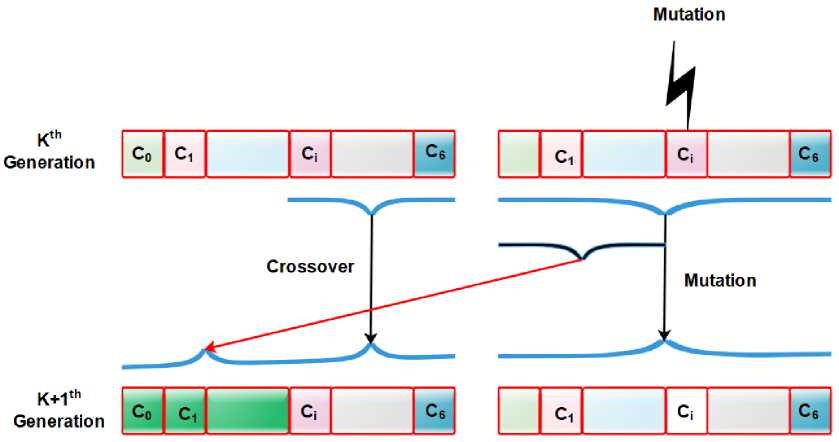
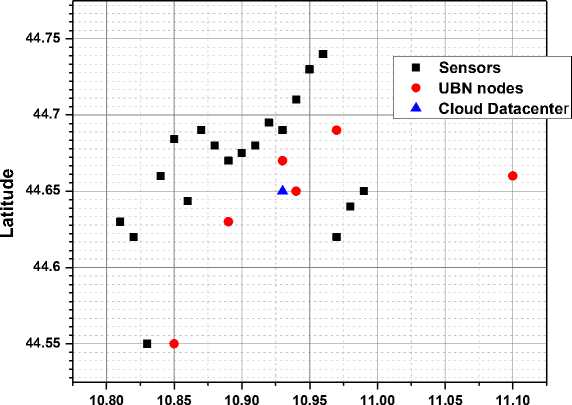
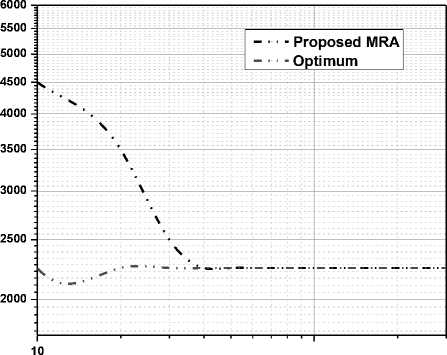
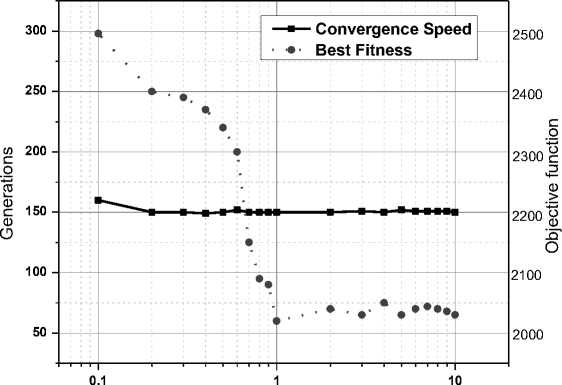
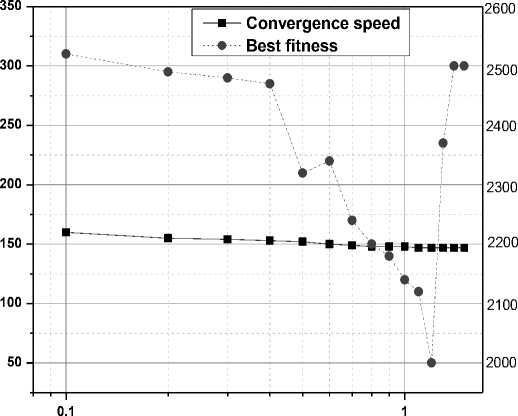
Список литературы An Efficient IoT-based Ubiquitous Networking Service for Smart Cities Using Machine Learning Based Regression Algorithm
- E. J. Kim, J. A. Jun and N. -S. Kim, "The method of controlling traffic paths in IoT-based software defined network," IEEE 7th Annual Ubiquitous Computing, Electronics & Mobile Communication Conference (UEMCON), 2016, pp. 1-4, 2016, doi: 10.1109/UEMCON.2016.7777824.
- H. Desai, D. Guruvayurappan, M. Merchant, S. Somaiya and H. Mundra, "IoT based grocery monitoring system," 2017 Fourteenth International Conference on Wireless and Optical Communications Networks (WOCN), 2017, pp. 1-4, doi: 10.1109/WOCN.2017.8065839.
- F. Li, H. Yang, X. Gao and H. Han, "Towards IoT-based sustainable digital communities," in Intelligent and Converged Networks, Vol.3, No.2, pp.190-203, June 2022, doi: 10.23919/ICN.2022.0015.
- M. N. Bhuiyan et al., "Design and Implementation of a Feasible Model for the IoT Based Ubiquitous Healthcare Monitoring System for Rural and Urban Areas," in IEEE Access, Vol.10, pp.91984-91997, 2022, doi: 10.1109/ACCESS.2022.3202551.
- V. Kiran, A. Sardana and P. Kaur, "Defending Against Ddos Attacks in Rpl Using Subjective Logic Based Trust Approach For IOT," 2022 2nd International Conference on Advance Computing and Innovative Technologies in Engineering (ICACITE), 2022, pp.1656-1660, doi: 10.1109/ICACITE53722.2022.9823719.
- F. Ali, S. Sarwar, Q. M. Shafi, M. Iqbal, M. Safyan and Z. U. Qayyum, "Securing IoT Based Maritime Transportation System Through Entropy-Based Dual-Stack Machine Learning Framework," in IEEE Transactions on Intelligent Transportation Systems, 2022, doi: 10.1109/TITS.2022.3177772.
- L. Babangida, T. Perumal, N. Mustapha and R. Yaakob, "Internet of Things (IoT) Based Activity Recognition Strategies in Smart Homes: A Review," in IEEE Sensors Journal, Vol.22, No.9, pp.8327-8336, 1 May1, 2022, doi: 10.1109/JSEN.2022.3161797.
- M. F. Ashfaq, M. Malik, U. Fatima and M. K. Shahzad, "Classification of IoT based DDoS Attack using Machine Learning Techniques," 2022 16th International Conference on Ubiquitous Information Management and Communication (IMCOM), 2022, pp.1-6, doi: 10.1109/IMCOM53663.2022.9721740.
- K. Shanmugam, M. E. Rana and G. Ong, "IoT based Indoor Senior Citizen Monitoring and Alerting System," 2022 16th International Conference on Ubiquitous Information Management and Communication (IMCOM), 2022, pp.1-4, doi: 10.1109/IMCOM53663.2022.9721797.
- T. Wang, W. Miao and Z. Zeng, "Optimization method of Data interaction in power IoT based on particle swarm algorithm," 2022 2nd International Conference on Consumer Electronics and Computer Engineering (ICCECE), 2022, pp.351-355, doi: 10.1109/ICCECE54139.2022.9712745.
- P. Masek, J. Hosek, K. Zeman et al., “Implementation of true IoT vision: survey on enabling protocols and hands-on experience,” International Journal of Distributed Sensor Networks, Vol.12, No.4, 2016.
- S. Zapolskytė and V. Palevičius, “Overview and analysis of smart cities,” Mokslas–Lietuvos ateitis/Science–Future of Lithuania, Vol.10, 2018.
- J. Lee, S. Baik, and C. Choonhwa Lee, “Building an integrated service management platform for ubiquitous cities,” Computer, Vol.44, No.6, pp.56–63, 2011.
- V. Buscher and L. Doody, “Global innovators: international case studies on smart cities,” BIS Research Paper, Vol.135, 2013.
- A. Zanella, N. Bui, A. Castellani, L. Vangelista, and M. Zorzi, “Internet of Things for smart cities,” IEEE Internet of Things Journal, Vol.1, No.1, pp.22–32, 2014.
- R. Nidhya; Manish Kumar; R. Maheswar; D. Pavithra, "Security and Privacy Issues in Smart Healthcare System Using Internet of Things," in IoT-enabled Smart Healthcare Systems, Services and Applications, Wiley, 2022, pp.63-85, doi: 10.1002/9781119816829.ch4.
- P. S. Farahsari, A. Farahzadi, J. Rezazadeh and A. Bagheri, "A Survey on Indoor Positioning Systems for IoT-Based Applications," in IEEE Internet of Things Journal, Vol.9, No.10, pp.7680-7699, 15 May15, 2022, doi: 10.1109/JIOT.2022.3149048.
- O. F. Riyad, A. Sharif, A. U. R. Chowdhury Suhan and M. M. Khan, "An IOT Based Nurse Calling System for Real-time Emergency Alert Using Local Wireless Network," 2021 IEEE 12th Annual Ubiquitous Computing, Electronics & Mobile Communication Conference (UEMCON), 2021, pp. 0924-0929, doi: 10.1109/UEMCON53757.2021.9666705.
- C. N. Oton and M. T. Iqbal, "Low-Cost Open Source IoT-Based SCADA System for a BTS Site Using ESP32 and Arduino IoT Cloud," 2021 IEEE 12th Annual Ubiquitous Computing, Electronics & Mobile Communication Conference (UEMCON), 2021, pp.0681-0685, doi: 10.1109/UEMCON53757.2021.9666691.
- Z. Ji, T. Zhang, K. Chen, J. Chen, Y. Wang and Y. Zhang, "Ubiquitous Sensing Intelligent Gateway for Power IoT based on IEC61850 Standard," 2021 33rd Chinese Control and Decision Conference (CCDC), 2021, pp.5625-5628, doi: 10.1109/CCDC52312.2021.9602324.
- G. Gad, E. Gad and B. Mokhtar, "Towards Optimized IoT-based Context-aware Video Content Analysis Framework," 2021 IEEE 7th World Forum on Internet of Things (WF-IoT), 2021, pp. 46-50, doi: 10.1109/WF-IoT51360.2021.9595891.
- O. Serhane, K. Yahyaoui, B. Nour and H. Moungla, "Energy-aware Cache Placement Scheme for IoT-based ICN Networks," ICC 2021 - IEEE International Conference on Communications, 2021, pp. 1-6, doi: 10.1109/ICC42927.2021.9500341.
- H. N. Mahendra, S. Mallikarjunaswamy, C. B. Nooli, M. Hrishikesh, N. Kruthik and H. M. Vakkalanka, "Cloud based Centralized Smart Cart and Contactless Billing System," 2022 7th International Conference on Communication and Electronics Systems (ICCES), 2022, pp.820-826, doi: 10.1109/ICCES54183.2022.9835856.
- S. Thazeen, M. S, M. N. Saqhib and S. N, "DOA Method with Reduced Bias and Side Lobe Suppression," 2022 International Conference on Communication, Computing and Internet of Things (IC3IoT), 2022, pp.1-6, doi: 10.1109/IC3IOT53935.2022.9767996.
- Xiao J, Wang L, Qin Z, Bauer P. “Detection of cyber attack in smart grid: A Comparative Study”. In 2022 IEEE 20th International Power Electronics and Motion Control Conference (PEMC), 2022 Sep 25 (pp. 48-54). IEEE.
- Venkatesh, D.Y., Mallikarjunaiah, K., Srikantaswamy, M. A comprehensive review of low density parity check encoder techniques. Ingénierie des Systèmes d’Information, Vol.27, No.1, 2022, pp.11-20. https://doi.org/10.18280/isi.270102.
- Vijaya Kumar P, Reddy VS, Vara Prasad K. Performance Investigation of PAPR Mitigation in MIMO-OFDM System Using Unconstrained Global Optimization Base Partial Transmit Sequence. In Smart and Intelligent Systems 2022 (pp. 465-476). Springer, Singapore.
- Manikandan J, Shruthi S, Mangala SJ, Agrawal VK. Design and implementation of reconfigurable coders for communication systems. In 2016 International Conference on VLSI Systems, Architectures, Technology and Applications (VLSI-SATA) 2016 Jan 10 (pp. 1-5). IEEE.
- Majumdar, P., Dey, S., Bardhan, S., & Mitra, S. “Support Vector Machines for the Classification of Remote Sensing Images: A Review”. Synergistic Interaction of Big Data with Cloud Computing for Industry 4.0, 2022, pp.175-180
- Gurumallu, P.K. and Shankaraiah “NLADSS: Design of Connectivity as a service (CAAS) model using node-level augmentation & dynamic sleep scheduling for heterogeneous wireless network handoffs,” International Journal of Intelligent Engineering and Systems, Vol.15, No.5, 2022, pp.273–283. Available at: https://doi.org/10.22266/ijies2022.1031.25.
- M. A. Khan, M. T. Quasim, N. S. Alghamdi and M. Y. Khan, "A Secure Framework for Authentication and Encryption Using Improved ECC for IoT-Based Medical Sensor Data," in IEEE Access, Vol.8, pp.52018-52027, 2020, doi: 10.1109/ACCESS.2020.2980739.
- S. Chavhan, D. Gupta, B. N. Chandana, A. Khanna and J. J. P. C. Rodrigues, "IoT-Based Context-Aware Intelligent Public Transport System in a Metropolitan Area," in IEEE Internet of Things Journal, Vol.7, No.7, pp.6023-6034, July 2020, doi: 10.1109/JIOT.2019.2955102.
- T. M. Behera, S. K. Mohapatra, U. C. Samal, M. S. Khan, M. Daneshmand and A. H. Gandomi, "I-SEP: An Improved Routing Protocol for Heterogeneous WSN for IoT-Based Environmental Monitoring," in IEEE Internet of Things Journal, Vol. 7, No. 1, pp. 710-717, Jan. 2020, doi: 10.1109/JIOT.2019.2940988.
- S. Zemmoudj, N. Bermad and M. Omar, "CA-ADP: Context-Aware Authorization and Delegation Protocol for IoT-based healthcare smart systems," 2019 International Conference on Internet of Things, Embedded Systems and Communications (IINTEC), 2019, pp. 203-208, doi: 10.1109/IINTEC48298.2019.9112119.
- Tamoor, Muhammad & Tahir, Muhammad & Zaka, Muhammad. “Energy Management System for Integration of Different Renewable Energy System into Microgrids”. International Journal of Advanced Trends in Computer Science and Engineering. 10. 1234-1242, 2021 doi: 10.30534/ijatcse/2021/1061022021.
- Shashi Raj K, Siddesh GK, Mallikarjunaswamy S, Vivek Raj K, Interference resilient stochastic prediction based dynamic resource allocation model for cognitive MANETs. Indian Journal of Science and Technology 13(41): 4332-4350. 2022, https://doi.org/10.17485/IJST/v13i41.687.
- M. A. Khan, M. T. Quasim, N. S. Alghamdi and M. Y. Khan, "A Secure Framework for Authentication and Encryption Using Improved ECC for IoT-Based Medical Sensor Data," in IEEE Access, Vol.8, pp.52018-52027, 2020, doi: 10.1109/ACCESS.2020.2980739.
- S. Thazeen, M. S, M. N. Saqhib and S. N, "DOA Method with Reduced Bias and Side Lobe Suppression," 2022 International Conference on Communication, Computing and Internet of Things (IC3IoT), 2022, pp.1-6, doi: 10.1109/IC3IOT53935.2022.9767996.
- Shivaji Rathod, Nataraj Kanathur Ramaswamy, “An efficient reconfigurable peak cancellation model for peak to average power ratio reduction in orthogonal frequency division multiplexing communication system”, International Journal of Electrical and Computer Engineering (IJECE), 2022, Vol.12, No.6, pp.6239~6247, DOI: https://doi.org/ 1010.11591/ijece.v12i6.

